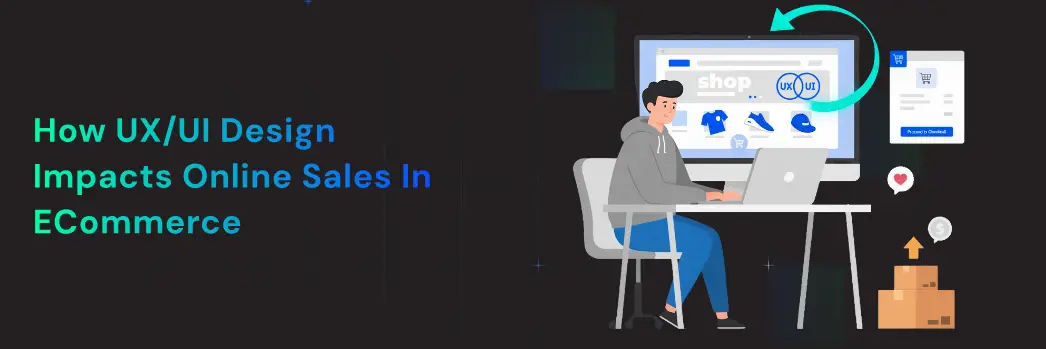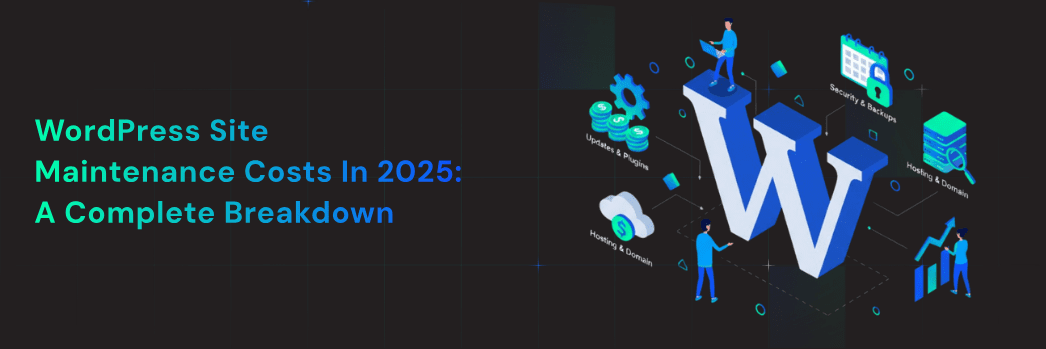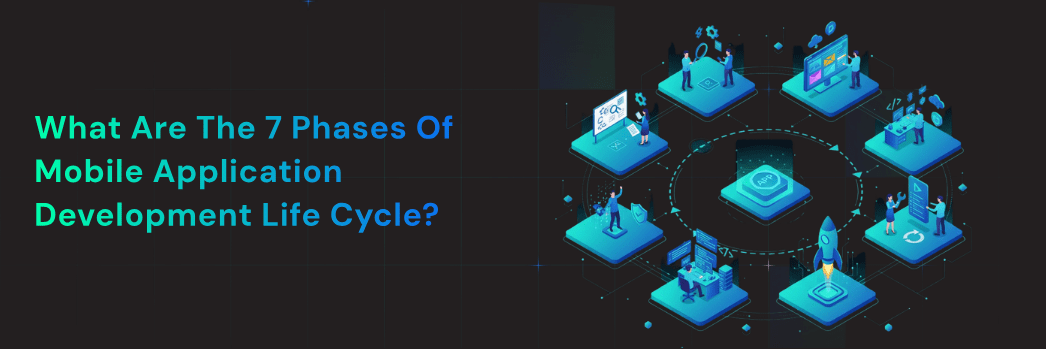E-commerce now focuses on creating experiences that convert visitors into devoted customers instead of just selling goods online. The true difference for success in today’s market frequently resides in user experience (UX) and user interface (UI) design, even though cost, product quality, and logistics are crucial.
A well-designed eCommerce platform doesn’t just look appealing—it guides users smoothly from browsing to checkout. Poor design, on the other hand, can frustrate visitors and lead to cart abandonment. Let’s explore how UX/UI design plays a direct role in driving online sales for eCommerce businesses.
In eCommerce, first impressions happen in seconds. When users land on your website or app, the layout, navigation, and visuals instantly set the tone for their shopping journey. A clean, modern UI with high-quality visuals builds trust and credibility, while a cluttered interface can overwhelm visitors and push them away before they explore products. Research shows that most users judge a company’s credibility based on its website design. For eCommerce, this means your UI is your virtual storefront, and it needs to be inviting.
Imagine walking into a store where products are randomly placed, aisles are confusing, and checkout is hidden. It’s frustrating, right? The same applies to eCommerce websites with poor UX. Good UX design ensures clear categories and menus so shoppers can quickly find products. A search bar with filters and predictive suggestions makes browsing easier. When customers find what they’re looking for effortlessly, they are more likely to complete their purchase, boosting conversion rates.
With mobile commerce accounting for more than half of global online sales, a mobile-first UX/UI approach is no longer optional. A responsive design ensures your site looks and functions well on all devices. Fast load times prevent bounce rates, especially on slower mobile networks. Simplified mobile checkouts make the buying process more convenient. A smooth mobile experience ensures customers can shop anytime, anywhere—without frustrations.
One of the most critical areas where UX design impacts sales is the checkout flow. Even if customers add items to their cart, a complicated checkout process can cause them to abandon it. A seamless checkout experience includes offering guest checkout without forcing account creation, providing multiple payment options such as cards, wallets, or PayPal, and showing progress indicators to highlight how close the buyer is to completion. Features like one-click checkouts for returning users also make the process easier. The smoother the checkout, the higher the conversion rate.
Trust is at the heart of eCommerce, and UI design elements can either strengthen or weaken it. Security badges, clear return policies, and transparent pricing help build confidence in online shoppers. Customers also want to see SSL certificates during payments and customer reviews on product pages. Transparency in shipping costs and delivery timelines reduces unpleasant surprises at checkout. All of these design details give shoppers peace of mind and encourage repeat purchases, fostering loyalty.
Personalized UX/UI makes the shopping journey feel tailor-made for each customer. For example, showing dynamic product recommendations based on browsing history or creating personalized homepages with relevant categories can make the user feel understood. Saved preferences and wish lists encourage customers to return and complete purchases later. Personalization increases engagement and strengthens the likelihood of conversions.
Designers often use visual hierarchy to guide user actions. In eCommerce, this is key to encouraging sales. The right fonts, colors, and layouts can direct the shopper’s attention to the most important elements. For instance, “Add to Cart” or “Buy Now” buttons should stand out clearly. Product images and prices should be prominent, while discounts and limited-time offers must be highlighted strategically. When done well, visual hierarchy ensures customers don’t miss important buying triggers.
A good-looking site that loads slowly can still drive away potential customers. Studies reveal that even a one-second delay in page load can significantly reduce conversions. Performance optimization is therefore part of UX. Compressing images without losing quality, reducing unnecessary code, and limiting pop-ups all make websites faster. A quick-loading website delivers a better user experience and directly boosts sales.
Inclusive UX/UI design ensures that your eCommerce platform is usable by all customers, including those with disabilities. Adding alt text for images assists visually impaired users, while keyboard navigation makes browsing easier for those who cannot use a mouse. Readable fonts and high-contrast colors improve visibility. Accessibility not only broadens your customer base but also portrays your brand as socially responsible.
Great UX/UI design is not a one-time effort but an ongoing process of improvement. By analyzing how users interact with your site, you can identify pain points and fix them. Heatmaps reveal where users click and where they drop off. A/B testing allows you to compare different design versions of CTAs, product pages, or checkout forms. Customer feedback provides direct insights into what works and what doesn’t. Together, analytics and design help refine the user journey continuously, ensuring better sales outcomes.

UX/UI design is not just about making an eCommerce website look attractive—it’s about creating seamless, trustworthy, and enjoyable experiences that convert visitors into paying customers. From smooth navigation and mobile-first design to personalized shopping journeys and optimized checkouts, every design choice influences sales.
Customers ultimately purchase experiences rather than just goods. The distinction between a bounce and a sale in eCommerce can be determined by the UX/UI design. In addition to increasing conversions, companies that engage in user-centric design also foster client loyalty, which supports sustained growth.
Search
Recent Post
- WordPress Site Maintenance Costs in 2025: A Complete Breakdown
- Strategies for Managing a Software Development Project
- What Are the 7 Phases of Mobile Application Development Life Cycle?
- Advantages of Swift Language: Why Should You Build an iOS App with Swift?
- Node.js vs. React.js: Which JavaScript Technology Should Developers Choose?
- UI/UX Design Services – Expert Solutions for Web & Mobile Apps
Categories
- Blog (43)
- Mobile App (7)
- option1 (1)
- option2 (1)
- WordPress (2)




